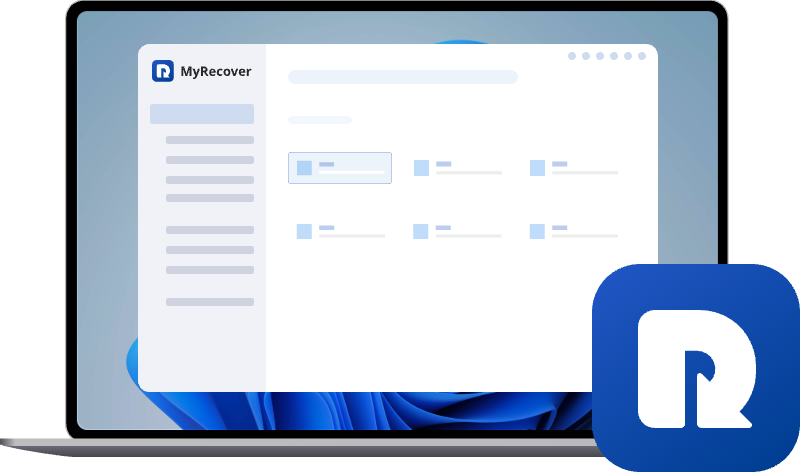Where Do Deleted Files from Flash Drive Go? The Truth Revealed
When you delete files from a USB flash drive on Windows, they don't go to the Recycle Bin. Wondering where do deleted files from a flash drive go? Learn the science behind flash drive deletion and get tips to restore your lost files.
Urgent Help! Deleted Files from USB Flash Drive Not in Recycle Bin
"Usually when I delete files on laptop or external hard drives files goes to Recycle Bin and if I need, I can retrieve them easily. But I noticed the files I delete on USB flash drive it does not go in to the Recycle Bin, then where does it goes? Am I making any mistake or some settings are needed? Thank you!"
- Question from Ari94
When managing USB or SD card storage space on your computer, you may have noticed this issue: files deleted from a USB drive don’t go to the Recycle Bin but disappear directly! Additionally, when deleting files from a flash drive, Windows will pop up a prompt saying, "Are you sure you want to permanently delete this file?"
At this point, you might become alarming—normally, permanently deleted files cannot be recovered unless professional data recovery tools are used.
Where do Deleted Files from Flash Drive Go?
In fact, the Recycle Bin is a hidden folder reserved by the operating system on the local hard drive, used for temporarily storing deleted files. Windows enables the Recycle Bin function by default only for internal hard drives, while removable storage devices such as USB drives and SD cards are excluded. This is because removable devices are frequently plugged in and out, making it difficult for the Recycle Bin to manage them synchronously.
When files are deleted from a flash drive, Windows marks the space occupied by those files as "reusable." The file data still exists on the drive, but the system treats it as "free space," allowing new data to overwrite it. Once the deleted files are overwritten by new data, the difficulty of recovery increases significantly.
Therefore, when you find that files on your flash drive have been deleted, stop using the drive immediately to prevent data overwriting.
How to Recover Deleted Files from Flash Drive on Windows
Unlike files deleted from your PC’s internal drive, files deleted from a flash drive or external hard drive do not go to the Recycle Bin. To recover data from a flash drive, you’ll need to turn to professional data recovery tools. This section will introduce two such tools: one is a command-line tool, and the other is a GUI tool. Whether you’re a professional or a beginner, you can easily retrieve lost data with them.
Windows File Recovery (Command-line Tool)
Windows File Recovery is a free command-line utility by Microsoft that helps recover deleted files from USB drives, SD cards, and other storage devices. It’s powerful but requires basic familiarity with the command prompt. Follow these steps to recover lost files:
Step 1. Download and install Windows File Recovery on your computer from Microsoft channel.
Step 2. Insert the flash drive into the computer and note its drive letter.
Step 3. Open Windows File Recovery and run it as administrator.
Step 4. Enter the command "Winfr F: E: /regular" and hit "Enter" to start the scanning process.
If you want to recover a specific file, folder or file type, just add filter command at the end of basic Windows File Recovery command. For example, if you want to recover a document named as "translationtask", you can enter the following command "Winfr F: E: /regular /n translationtask. docx".
- ★Tips:
- F: the source drive letter (the flash drive).
- E: the destination drive letter (where recovered files will be saved).
- Regular: Scan mode for recently deleted files.
- /n translationtask. docx: Specifies the filename to recover (supports wildcards like *.docx).
When the process is completed, you can press "y" to check the recovered files in the destination folder.
Recover deleted files with MyRecover (Beginner Friendly)
If you're not comfortable with command-line tools, this GUI-based data recovery tool—MyRecover will meet your needs. It simplifies the data recovery process, allowing even novice users to recover data effortlessly. It supports operation on Windows 7/8/8.1/10/11 as well as Server 2012, 2016, 2019, and 2025.
Discover the compelling highlights of MyRecover below.
✅Higher Success Rate – Advanced deep scan for NTFS/FAT32/exFAT drives.
✅Smart Filtering – Recover files by type, date, or size with precision.
✅500+ Devices Support - Recover files from all types of devices like SSD, HDD, USB flash drive, SD card, cameras and more.
✅Handle 500+ Data Loss Scenarios – Recover from deleted partition, formatted hard drive, emptied Recycle Bin, system crash, virus attack, etc.
✅Supports over 1,000 File Types – Including documents, photos, videos, audio, archives, and Outlook data files.
✅Smart Scan Modes – Choose from Quick Scan for recent deletions or Deep Scan for formatted/corrupted drives.
Step 1. Download and install MyRecover on your computer from secure channel. Connect the flash drive to the computer with correct cable.
Step 2. Launch it and select the flash drive to scan for lost files, then click "Scan".
Step 3. Choose files you wish to recover from the recoverable lists and click "Recover".
Step 4. Select a location (not the original one) to save the recovered files.
Once the process is finished, the message indicating successful recovery will pop up. You can check the recovered files by clicking on the destination folder path or the "Browse" button.
Conclusion
When you deleted important files from your flash drive, only to realize they didn’t show up in the Recycle Bin. Don’t worry — you’re not alone, and your files may still be recoverable with correct tools like MyRecover and steps.
Moreover, the Professional edition of MyRecover also provides unlimited data recovery quota and allows you to recover files from crashed system. It will make your data recovery process much smoother.


